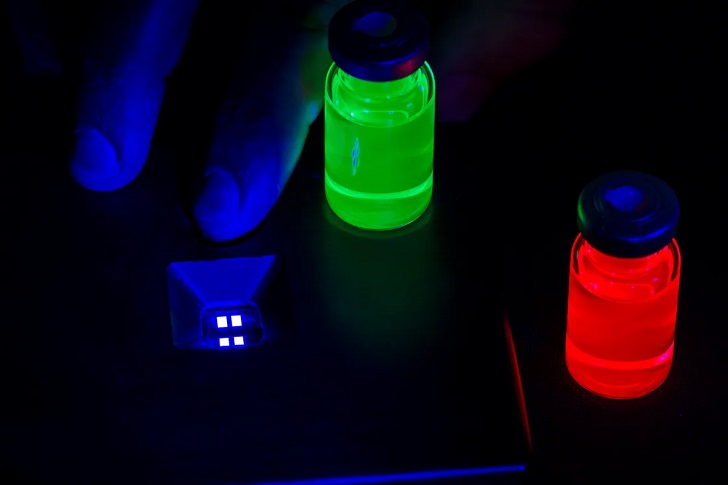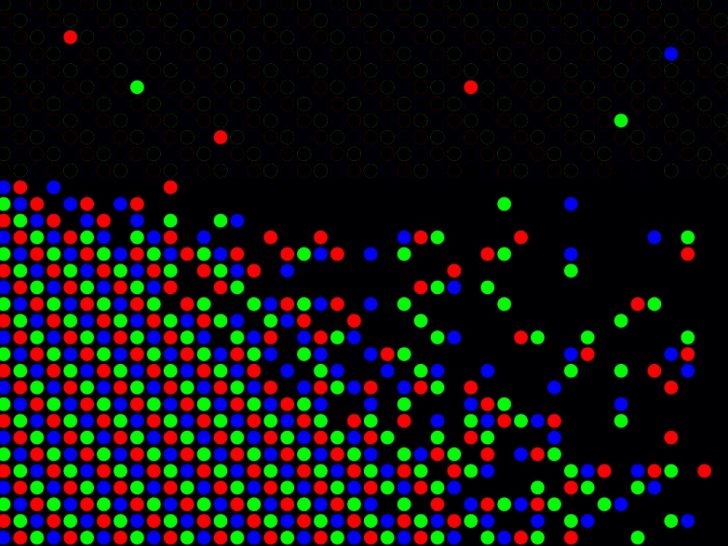Quantum dot technology is a recent innovation in electronics that is fast gaining popularity among consumers and manufacturers alike. Quantum dots are tiny nanocrystals made from semiconductor materials that can emit light of various colors depending on their size. Quantum dot technology has found application in various areas, such as display screens, solar cells, and medical imaging.
While the technology offers several advantages over conventional technologies, some disadvantages must be considered. Below are the key advantages and disadvantages of quantum dot technology, which is quickly becoming one of the most promising new technologies in the industry.

Nanosys/ Amanda Carpenter/ Oleg Grachev | Two studies improve the status of artificial atoms—called quantum dots—as qubit candidates for quantum technologies
Advantages of Quantum Dot Technology
Better Color Accuracy
Quantum dot technology offers a wider color gamut, making it possible to produce more accurate colors than conventional technologies. This means that images and videos displayed on quantum dot screens are lifelike, and colors appear more vibrant and true to life.
Energy Efficiency
Quantum dot technology is energy-efficient, making it an attractive option for manufacturers looking to reduce power consumption in their devices. Quantum dot displays require less energy to produce bright and vivid colors, making them an ideal choice for energy-conscious consumers.
Improved Brightness
Quantum dot technology enables displays to produce brighter and more vivid images than conventional technologies. This is because the tiny nanocrystals that make up quantum dots emit light very efficiently, resulting in brighter displays with better contrast.

BRANDON PALACIO/ SPECTRUM | Give your display the brilliance it deserves with Quantum dots
Longer Lifespan
Quantum dot displays are known for their long lifespan, with some models lasting up to 100,000 hours. This is because quantum dots are highly stable and do not degrade over time, unlike organic materials used in conventional technologies.
Better Contrast
Quantum dot technology offers improved contrast, differentiating light and dark areas in an image or video. This results in a more immersive viewing experience for the user.
Disadvantages of Quantum Dot Technology
Cost
One of the main disadvantages of quantum dot technology is its cost. Quantum dot displays are generally more expensive than conventional displays, making them less accessible to budget-conscious consumers.
Environmental Concerns
Quantum dots are made from materials such as cadmium, lead, and selenium, which can harm the environment if not properly disposed of. This has raised concerns about the impact of quantum dot technology on the environment and the need for responsible disposal methods.

Daniel Sims/ Techspot | Those who are not shocked when they first come across quantum theory cannot possibly have understood it
Limited Size
Currently, quantum dot displays are limited, with most models available in sizes up to 65 inches. This makes it challenging to use quantum dot technology for large displays such as billboards and stadium screens.
Blue Light Emission
Quantum dots displays emit blue light, which can be harmful to the eyes if viewed for extended periods. This has raised concerns about the impact of quantum dot technology on eye health, especially for individuals who spend a lot of time in front of screens.




